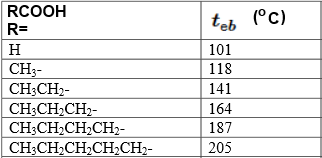





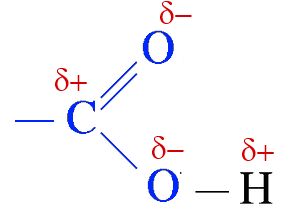
The center (blue) of the carboxyl group is planar, hydroxyl $OH$ and carbonyl $C=O$ bonds are strongly polar.
Water is also highly polar.
The molecules of water and carboxylic acid can then be associated to form hydrogen bonds. This explains the very good solubility of the free carboxylic acids with small carbon chains in water.
 Once the chains of $C$ atoms extends, the (non-polar, "fearing water") hydrophobicity of the hydrocarbon chain outweighs the hydrophilic (polar, "loving water") of the hydroxyl group .
Once the chains of $C$ atoms extends, the (non-polar, "fearing water") hydrophobicity of the hydrocarbon chain outweighs the hydrophilic (polar, "loving water") of the hydroxyl group .
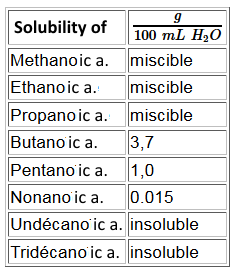
Two hydrogen bonds provide a strong mutual attraction of carboxylic acids. Their inertia is that of dimers and they present high boiling temperatures.
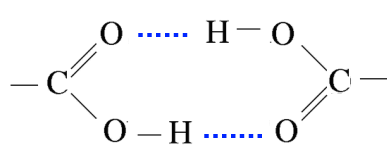
Their volatility is smaller than those of alcohols, which have only the hydroxyl group to join, and much smaller than that of aldehydes which associate by low dipoles carbonyl groups and that of the alkanes which are held together only by their low van der Waals forces.
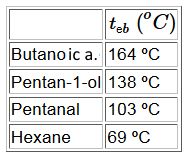
Gradually, as the chain of $C$ atoms extends, the hydrophobic nature of the hydrocarbon chain outweighs the hydrophilic nature of the carboxyl group and volatility of carboxylic acids will be closer to that of alkanes of comparable molecular masses:
